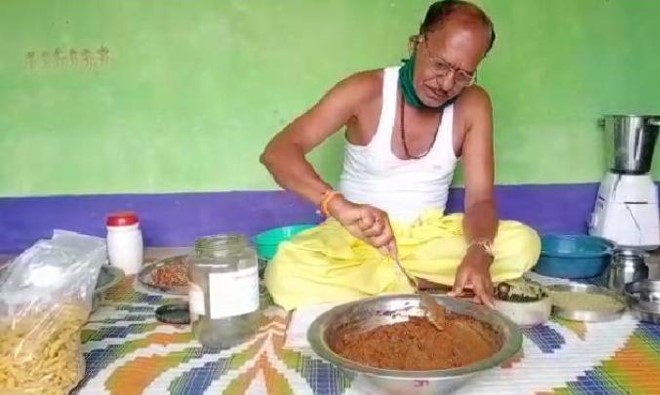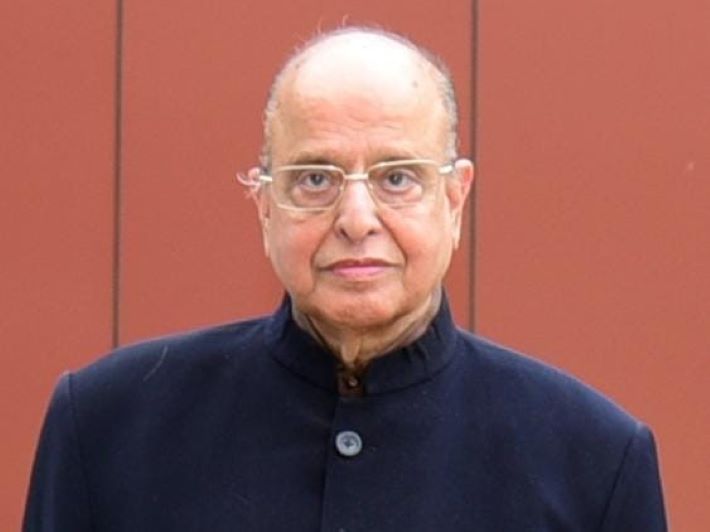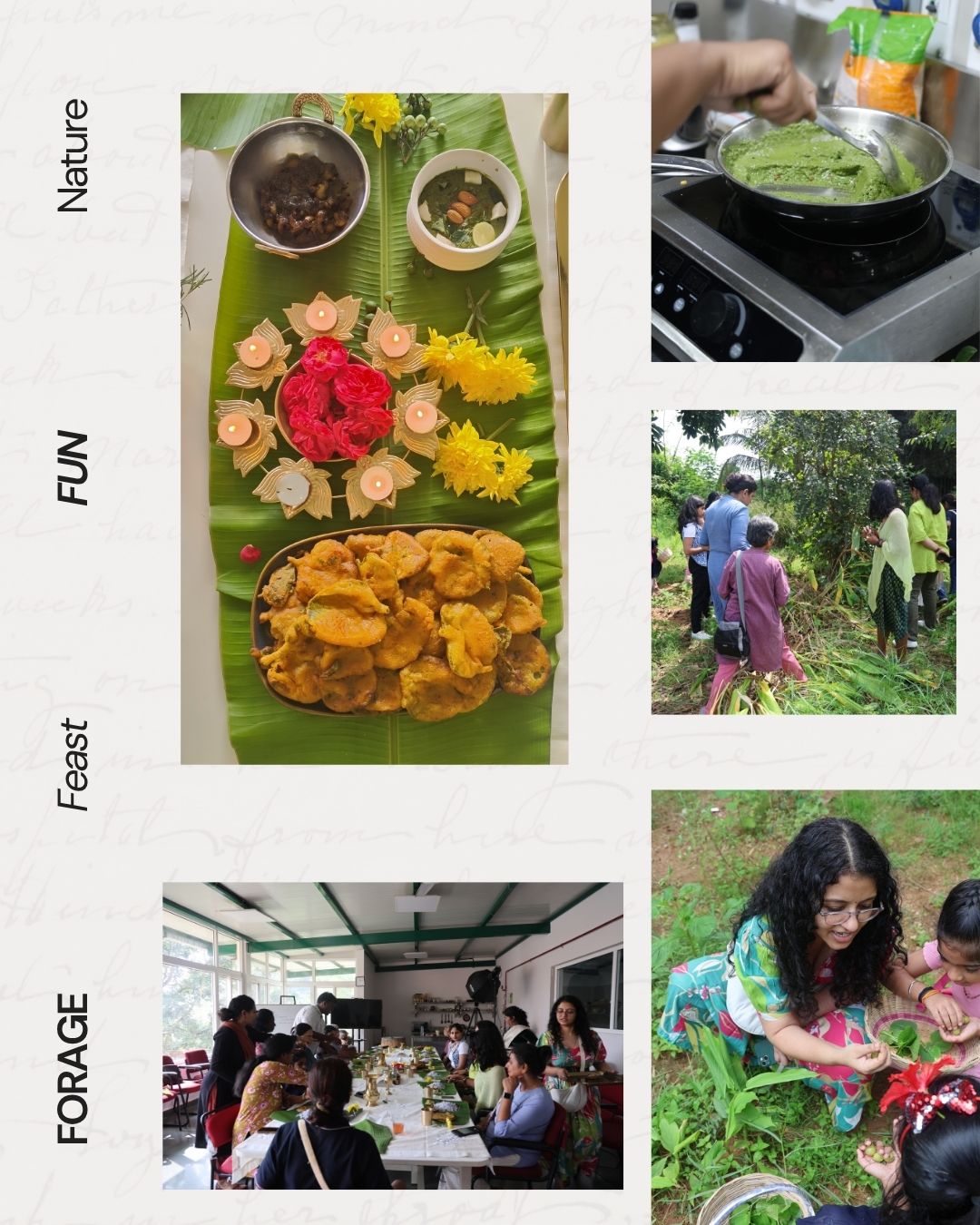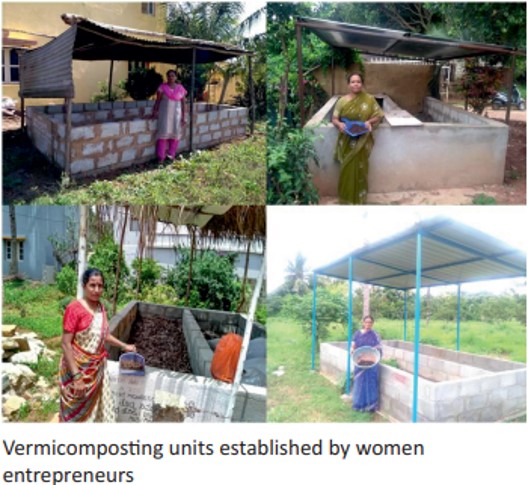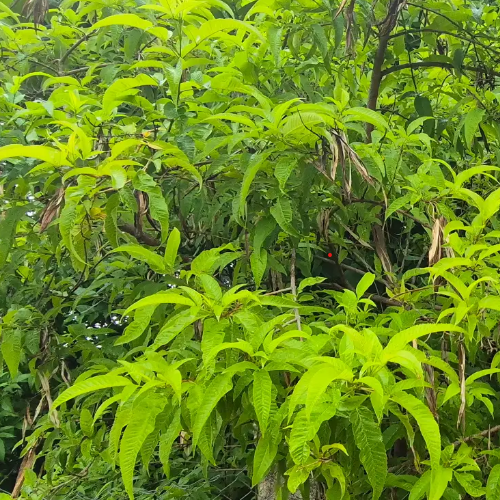Limestone Addition - Kshara Preparation 4/5

Classical information
To prepare Madhyama Kshara, One or one and a half Kudava (approximately 240 ml) of Ksharaodaka should be reserved for later use in the preparation process. Take the remaining Ksharaodaka and place it on fire to evaporate excess moisture. Simultaneously, gather Katasharkara, Bhasmasharkara, Shukti, and Shankha Nabhi. Heat these ingredients until they become red hot. Once the dravyas are red hot, immediately dip them into the reserved Ksharaodaka. After dipping, powder the mixture in the same Ksharaodaka. Transfer the powdered mixture into an iron vessel. Cook this mixture while continuously stirring until it achieves a consistency that is neither too thick nor too thin. So thus madyama kshara is prepared.
What we did and observed
Now in the contemporary method, after the filtrate is boiled and reduced to ⅓, then we add 50 g of shukti churna which is commercially available (Ca(OH)2) to the portion and boil again. This solution is filtered using cotton cloth to remove the crystals of powder and heated again. Continue boiling till it becomes neither too thick nor too thin. This portion is called madyama kshara.
Preparation of madyama kshara is basically increasing therapeutic efficacy. So as we boil the filtrate, excess moisture is removed and this concentrates the solution. And then adding the mixture of bhasma sharkara, shukti etc as mentioned in shastras, medicinal qualities are being activated. By adding this in ksharodaka, ensures that the medicinal properties are evenly distributed throughout the solution.
The inclusion of calcium ore in the preparation of Madhyama Kshara is a strategic choice that enhances its alkaline properties, promotes beneficial chemical reactions, and improves its therapeutic potential. Calcium ore, which includes substances like limestone or conch shell ash, is rich in calcium carbonate. When added to the Kshara preparation, it increases the alkaline nature of the final product. Various ores of calcium mostly contain 95% calcium carbonate and 5% calcium phosphate, magnesium carbonate and microelements. Nowadays, we commonly add shukti churna which is Ca(OH)2 [calcium hydroxide] as it is commercially available. Instead of this we can also use other calcium ores which are basically CaCO3 predominant.
Gaps Identified
- By focusing on standardization, understanding chemical interactions, investigating therapeutic efficacy, exploring additional ingredients, and establishing quality control measures, we can enhance the reliability and effectiveness of this traditional formulation.
- Ksharodaka mainly contains Sodium & Potassium hydroxides. Ksharana shakti is relatively higher in hydroxides as opposed to carbonates. Once the Sudha Sharka is added, upon heating, Calcium Carbonates decompose to Calcium oxide and Carbon dioxide which escapes into the atmosphere. Furthermore Calcium oxide reacts with water to form calcium hydroxide. Calcium Hydroxide then reacts with potassium/sodium carbonate in the mixture and precipitates. But potassium hydroxide remains in solution.
Proposed ways to address gaps (Megha)
- Potentiation of a therapeutic preparation can be done in many ways. Here, the classics describe the use of many different compounds. Pre-clinical laboratory studies can be undertaken in order to understand how the use of these plants, minerals or different processing techniques contribute to making it mild, medium or highly potent.


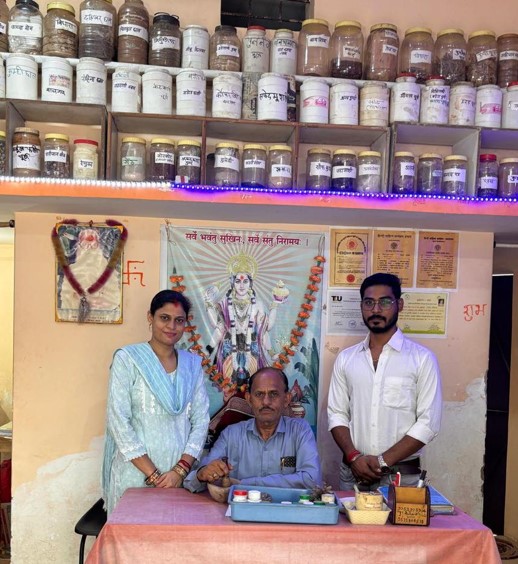
.png)
.jpeg)
